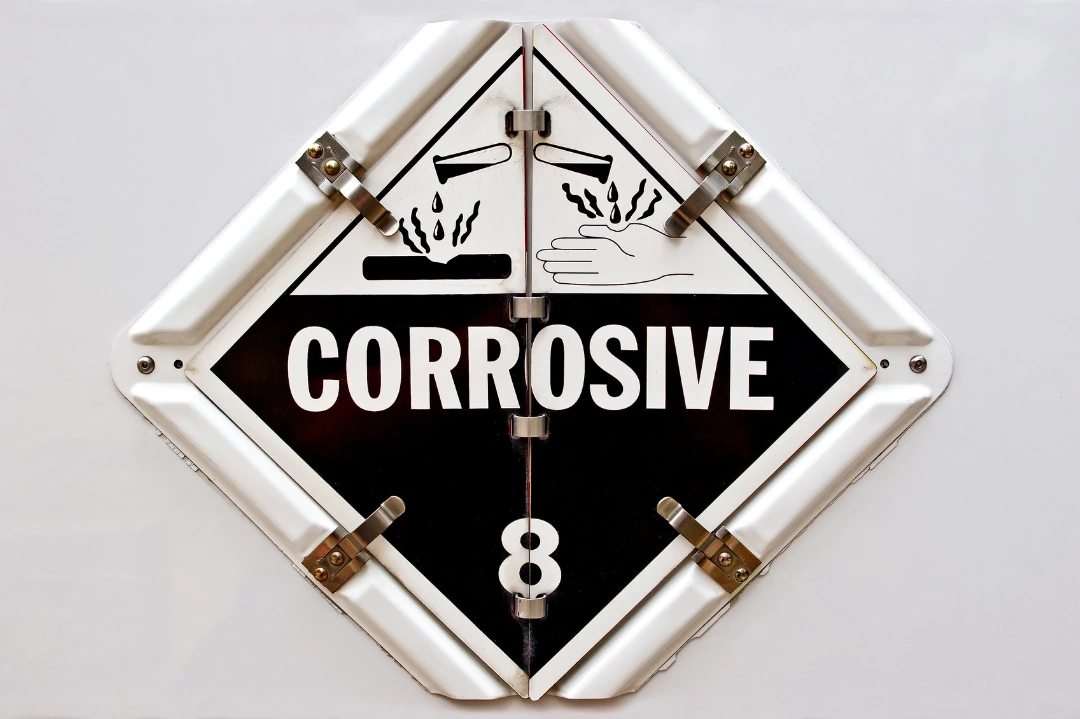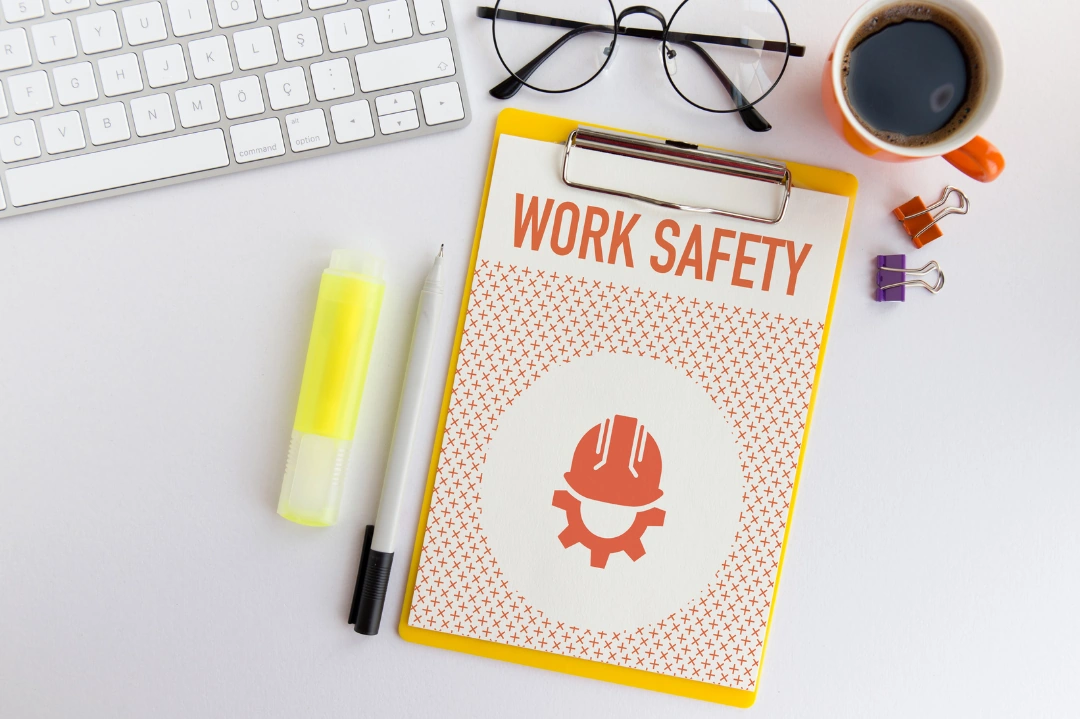
The Bony Hand Symbol: Recognizing And Handling Corrosive Materials
In environments where lone workers are present, recognizing and understanding safety symbols—especially the corrosive symbol—helps prevent serious injuries and supports a culture of safety. Featuring imagery of a substance damaging skin or materials, the corrosive symbol signals the presence of hazardous substances that demand careful handling. Employers across various industries, including manufacturing, maintenance, and laboratory work, benefit from understanding what this symbol represents to meet compliance requirements and better protect their workforce. Be aware of the safety practices, hazard awareness, and regulatory considerations associated with the corrosive symbol.
The Corrosive Symbol: What It Means
The corrosive symbol, often depicted as test tubes pouring liquid onto a hand and a metal surface, signals the presence of substances that can burn skin or deteriorate materials. It serves as a visual cue to handle such chemicals with care, especially in environments where immediate assistance may not be available, such as with lone workers. Understanding the symbol’s meaning helps reinforce safe handling procedures and hazard awareness.
Commonly labeled substances include strong acids, such as hydrochloric and sulfuric acid, and bases, such as sodium hydroxide. These are frequently used in manufacturing, industrial cleaning, and laboratory settings. Certain disinfectants and degreasers may also carry the symbol due to their corrosive properties. Recognizing these materials allows employers to better prepare for safe storage, usage, and emergency response.
The Importance Of Recognizing The Corrosive Symbol In The Workplace
Identifying the corrosive symbol at work is crucial for safety, especially for lone workers who may not have immediate assistance. If inhaled, corrosive materials can cause severe skin burns, eye injuries, and respiratory problems. Without recognizing the corrosive symbol, the risk of accidents rises. Lone workers need to quickly identify these materials, relying on their training to manage emergencies independently.
Recognizing the corrosive symbol also helps establish effective safety protocols. It allows employers to create safer workspaces and ensures workers know how to protect themselves. By making the corrosive symbol a familiar sight, employers can reduce workplace injuries and boost safety awareness.
Safety Protocols For Handling Corrosive Materials
Protecting lone workers from the risks associated with corrosive substances requires clear safety procedures, proper training, and well-maintained equipment. Employers should train workers to safely handle, transfer, and dispose of these materials, emphasizing the importance of avoiding contact or accidental release. A clean, organized workspace further minimizes hazards, making quick spill response and containment a standard practice. Spill kits should be accessible, and workers trained in their proper use.
Personal Protective Equipment (PPE) minimizes exposure to corrosive chemicals. Employers must carefully evaluate tasks to determine the appropriate personal protective equipment (PPE)—such as gloves, goggles, face shields, and aprons—and confirm that workers use it consistently and correctly. Regularly inspecting storage containers, tools, and protective gear helps prevent leaks or malfunctions. Together, these measures support a safer work environment and reduce the likelihood of injury.
Proper Use Of Personal Protective Equipment (PPE)
Handling corrosive materials safely hinges on using the correct PPE. The choice of PPE depends on the specific chemicals and their concentrations. Essential gear includes chemical-resistant gloves, safety goggles or face shields, and protective clothing like aprons or full-body suits. These items are crucial for preventing skin burns, eye injuries, and inhalation of harmful fumes.
Selecting the proper PPE involves evaluating the tasks and hazards involved. Employers must ensure that all equipment meets industry standards and is tailored to the specific chemicals they use. For example, gloves should be resistant to the specific acids or bases that will be handled, and goggles must seal completely to prevent splashes.
Employers must train workers in the correct use and maintenance of PPE and instruct them on how to put on and remove equipment without contaminating it. Regular inspections and maintenance of PPE are essential to ensure its effectiveness, and employers should replace any damaged gear immediately.
Safe Storage And Labeling Practices
For lone workers, safely storing and clearly labeling corrosive materials helps prevent accidents and injuries. Choosing the right storage location is the first step. Corrosive substances must be kept in well-ventilated areas away from flammable or reactive chemicals. Storage spaces should have spill containment measures, like secondary trays, to manage leaks effectively. Maintaining these areas tidy and organized helps avoid accidental mix-ups.
Labels are essential for safety, providing immediate information about the contents of a container. Every container containing corrosive substances must display the corrosive symbol and include details such as the chemical name, concentration, and handling instructions. This ensures that lone workers can quickly understand the risks and take necessary precautions.
Employers must regularly review and update labels to ensure compliance with current regulations and standards. This includes ensuring labels remain readable and intact, even in harsh conditions. Regular audits of storage and labeling practices identify areas for improvement and underscore the importance of these safety measures.
Compliance And Legal Considerations
Navigating the regulations surrounding corrosive materials is essential for employers of lone workers. Compliance not only keeps workers safe but also protects companies from legal issues. In the U.S., OSHA standards outline specific rules for labeling, storing, and handling hazardous substances.
Employers must ensure that their safety protocols align with these guidelines, including keeping safety data sheets up to date for all corrosive materials. These sheets detail chemical properties, hazards, and safe handling practices. Regular audits and inspections help identify compliance gaps and enhance the workplace safety culture.
Training And Preparedness For Lone Workers
Practical training can keep lone workers safe around corrosive materials. Training programs should teach workers to identify the corrosive symbol, understand the risks of different chemicals, and know the steps for safe handling and emergency response.
Interactive sessions with hands-on practice and scenario drills can improve learning and retention. Training should be tailored to the specific risks associated with each industry, ensuring that workers possess the necessary skills for their roles. Regular updates on safety protocols and regulatory changes help maintain high preparedness levels.
Employers can also utilize technology, such as mobile apps, to provide resources and support to workers in the field.
Emergency Response And First Aid
In the event of exposure to corrosive materials, a straightforward emergency response plan is crucial. Immediate actions include rinsing the affected area with water for at least 15 minutes and seeking medical attention promptly.
Employers should ensure that first aid stations and emergency showers are easily accessible, particularly in areas where corrosive materials are commonly used. Lone workers need training to respond swiftly in emergencies, including contacting emergency services and reporting incidents. Regular drills and simulations reinforce these protocols, ensuring workers respond confidently and effectively.
Conclusion
Understanding and respecting the corrosive symbol helps prevent injuries and reinforces safe practices, particularly for lone workers who face heightened risks in isolated settings. When this symbol is clearly recognized and its meaning understood, it helps foster better decision-making around hazardous substances commonly found in industrial, maintenance, and laboratory environments.
Employers are encouraged to apply the safety measures outlined— from thorough training and appropriate PPE to compliant storage and labeling procedures—to support a well-protected workforce. Ongoing reviews of safety protocols, equipment, and emergency preparedness can help ensure lone workers remain confident and capable when handling corrosive materials. Proactive attention to these practices strengthens compliance efforts and reduces the likelihood of preventable incidents.
Read More From the Lone Worker Blog
How To Implement A Man Down Alert Into Your Existing Worker Safety Protocols

Worker safety is a top priority for any organization, and integrating advanced tools into your protocols can significantly enhance your safety measures.
Read MoreWorkplace Safety: Best Practices For Employees And Employers

Lone workers face unique safety challenges in their isolated work environments. Employers must address these challenges by implementing tailored safety practices.
Read More


